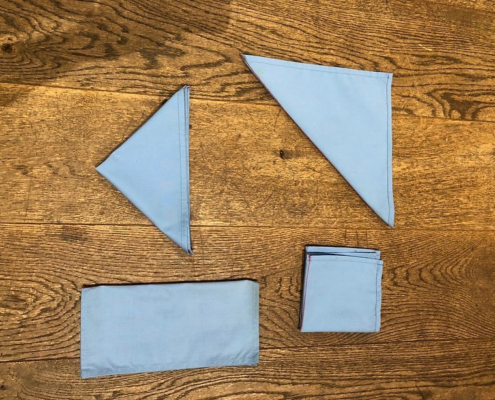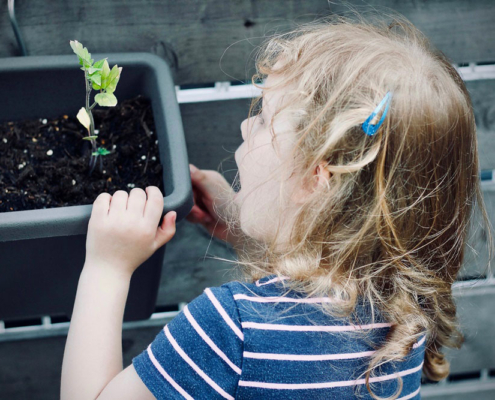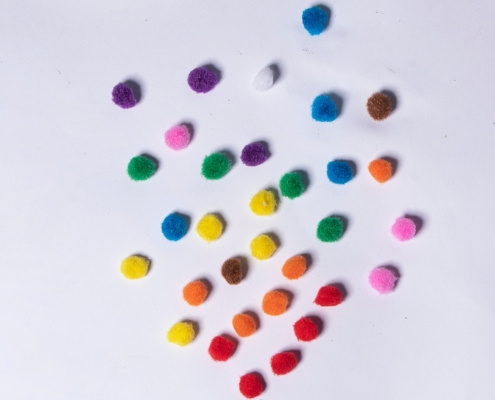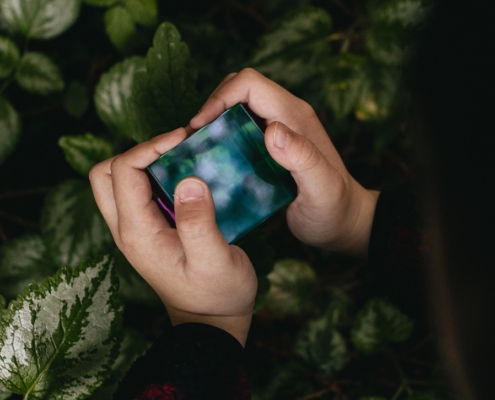
Mathematics: 100 Board
The Montessori 100 Board is divided into 100 squares, with 10 rows of 10 squares each. Children will use the board to practise counting and gain an understanding of number sequences. Once they have a good knowledge of numbers 1-100, the board…

Practical Life: Cloth folding
Folding is one of many practical life skills that children learn in Montessori classrooms. Symmetrical folding can be tricky for little ones, so we start with simple cloth folding. This helps with concentration, patience and muscle control.
Watch…

Cultural: Lifecycle of a seed
Children always enjoy the ‘lifecycle of a seed’ lesson (especially poignant in the spring) because of the many exciting and tactile ways in which the learning can be applied and extended.
There are the five stages of plant life cycle:…

Sensorial: Knobbed Cylinders
The presentation with knobbed cylinders is one of the first sensorial activities in a Montessori classroom. The apparatus was designed by Maria Montessori herself, and consist of wooden cylinders of varying diameter and height, all of which…

Mathematics: Small Hexagon Box
The Hexagon Box shows children how different shapes can be used to create other shapes; more specifically, that by joining together different triangles, four-sided figures are formed.
The Small Hexagon Box is a lesson that follows on…

Mathematics: Geometric Solids
Geometric Solids not only form some of the groundwork for geometry but encourage exploration and creative thinking. The apparatus comes in a set of 10 wooden 3-D shapes, including:
cube
sphere
cylinder
rectangular prism
square-based…

Sensorial: The Brown Stair
The Brown Stair (also called the Broad Stair) is a series of ten graduated, wooden prisms all the same length but different heights. As a grading activity that helps visual acuity, the Brown Stair is important in early mathematics and sensory…

Sensorial: Triangular Box
In Montessori classrooms, we introduce geometric shapes to young children using the Triangular Box. Whilst the activity does form the foundation for exploring more complex geometric concepts, it is part of the sensorial curriculum as it focuses…

Practical Life: Sorting Pom-Poms
Sorting activities are important in Montessori education because they help children create order in their world. Sorting refines the senses and trains the brain to organise information.
Have a look at this simple tutorial by Wonderful…

Mathematics: Memory Game
In Montessori mathematics, the Memory Game is an activity designed to help children develop their memory skills while reinforcing number recognition. The game incorporates movement and encourages both gross and fine motor skills, and is something…

Practical Life: Opening and Closing Boxes
The learning objectives for this simple lesson of opening and closing boxes are: fine motor development, problem solving, cause and effect, as well as receptive and expressive language.
The lesson provides children with the opportunity…

Practical Life: Cutting
The purpose of the cutting activity is to teach the child how to cut paper in preparation for other activities using scissors. The lesson is simple but what is important is a neat, ordered environment, which is essential to the confidence of…





